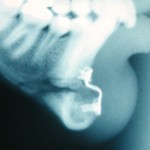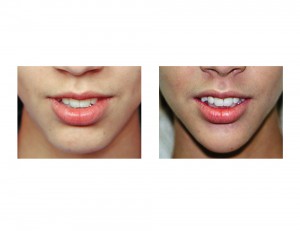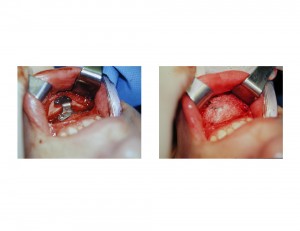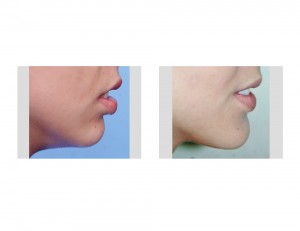Background: The sliding genioplasty is a powerful changer of chin shape that dates back to its first description in the early 1940s. It is not used nearly as often as a chin implant due to being a more invasive procedure that requires greater technical expertise and experience to perform. But it historically offers the advantages of being able to change the vertical (longer or shorter) and width (more narrow) dimensions that a chin implant can not do.
One of the dimensions to consider in chin augmentation, whether it be an implant or using a sliding genioplasty, is the width of the chin. Nearly every chin implant style (with the exception of the central style) will make the chin wider. Conversely, every sliding genioplasty of more than a few millimeters of advancement will make the chin more narrow. How much the chin will narrowed by moving the bone depends on the extent of the horizontal advancement. But with movements of 8mm to 10mms one should expect the chin to look appreciable more narrow. For women this may be advantageous but for men this could be an undesireable aesthetic change.
A sliding genioplasty can uniquely narrow chin width through either a large advancement or by simultaneously doing a midline ostectomy maneuver. Since the down fractured segment of the chin is really a pedicled bone flap with a good blood supply, the bone can be safely split, a wedge of bone removed and then put back together. This narrows the width of the chin any amount that one needs. Such chin narrowing techniques are common in V-line jawline reduction and in facial feminization jawline reshaping procedures.
Case Study: This 18 year-old female was undergoing a combined rhinoplasty and chin augmentation change. The amount of chin augmentation that she needed was not great (8mms) but she also wanted a more narrow chin as well.


Case Highlights:
1) A sliding genioplasty is a well known chin reshaping procedure that can change the horizontal and vertical dimensions of the chin.
2) The width of the chin can be narrowed as it is brought froward through a midline ostectomy.
3) The width dimension of the chin needs to considered with every sliding genioplasty to determine if it should be aesthetically narrowed or made wider.
Dr. Barry Eppley
Indianapolis, Indiana




